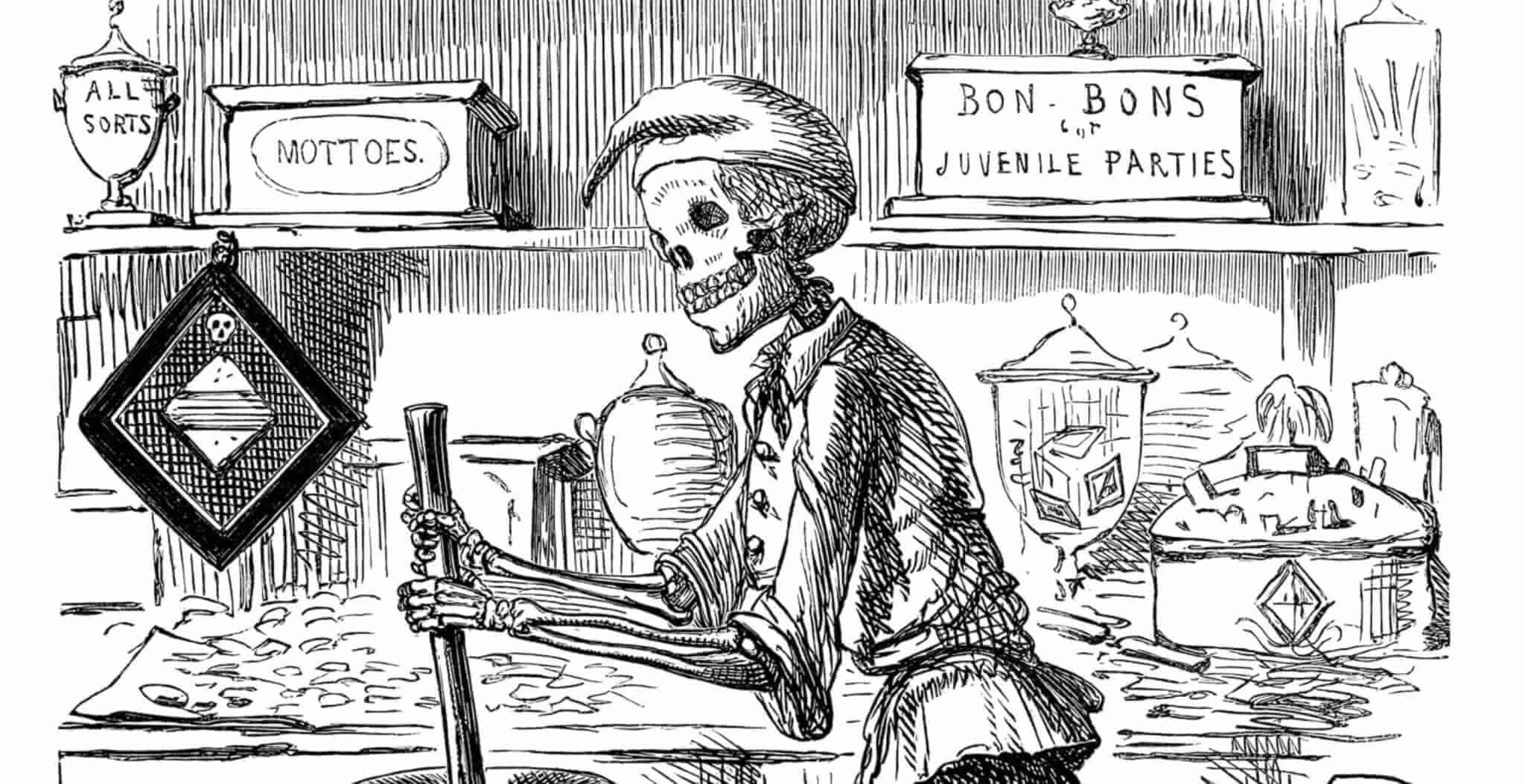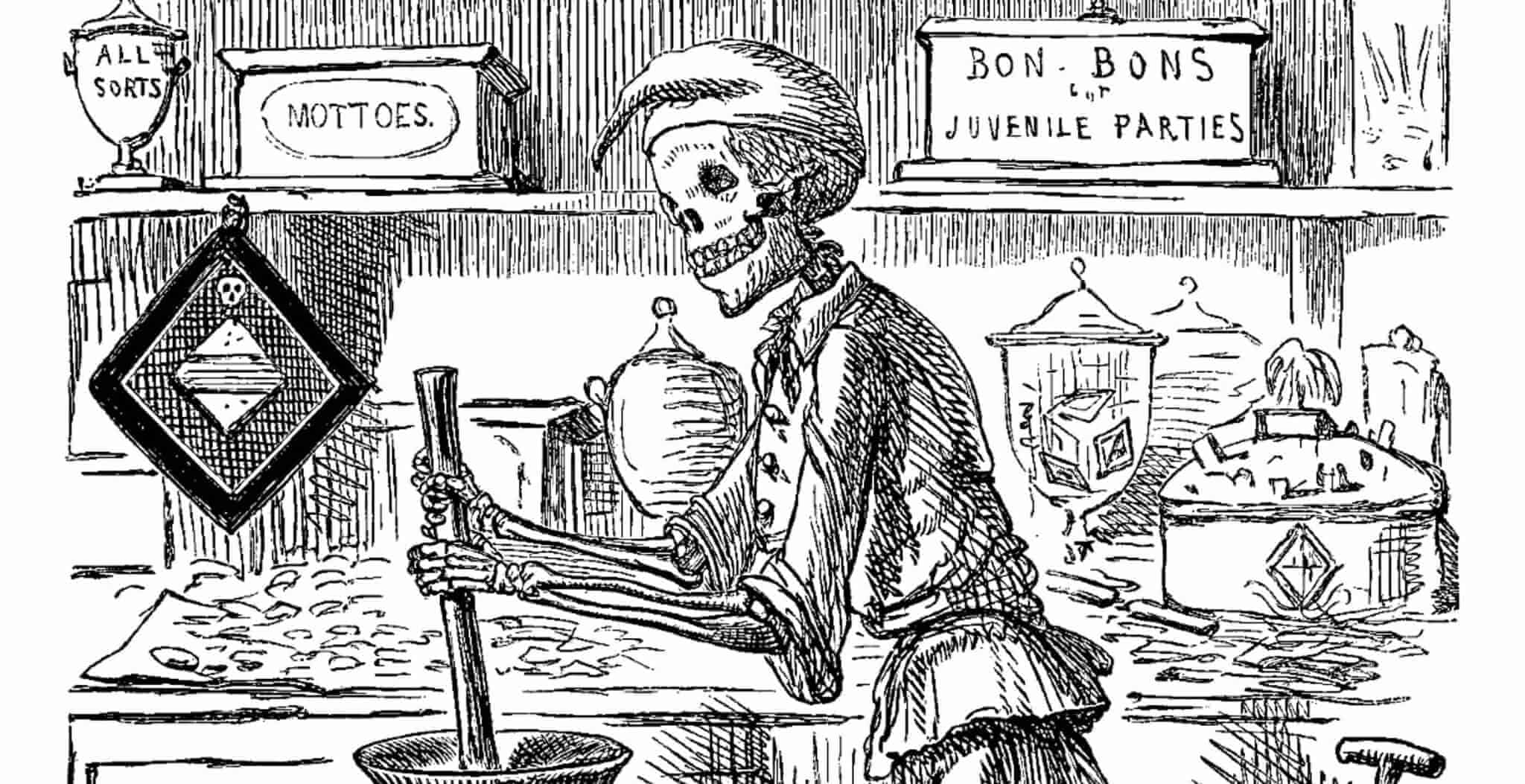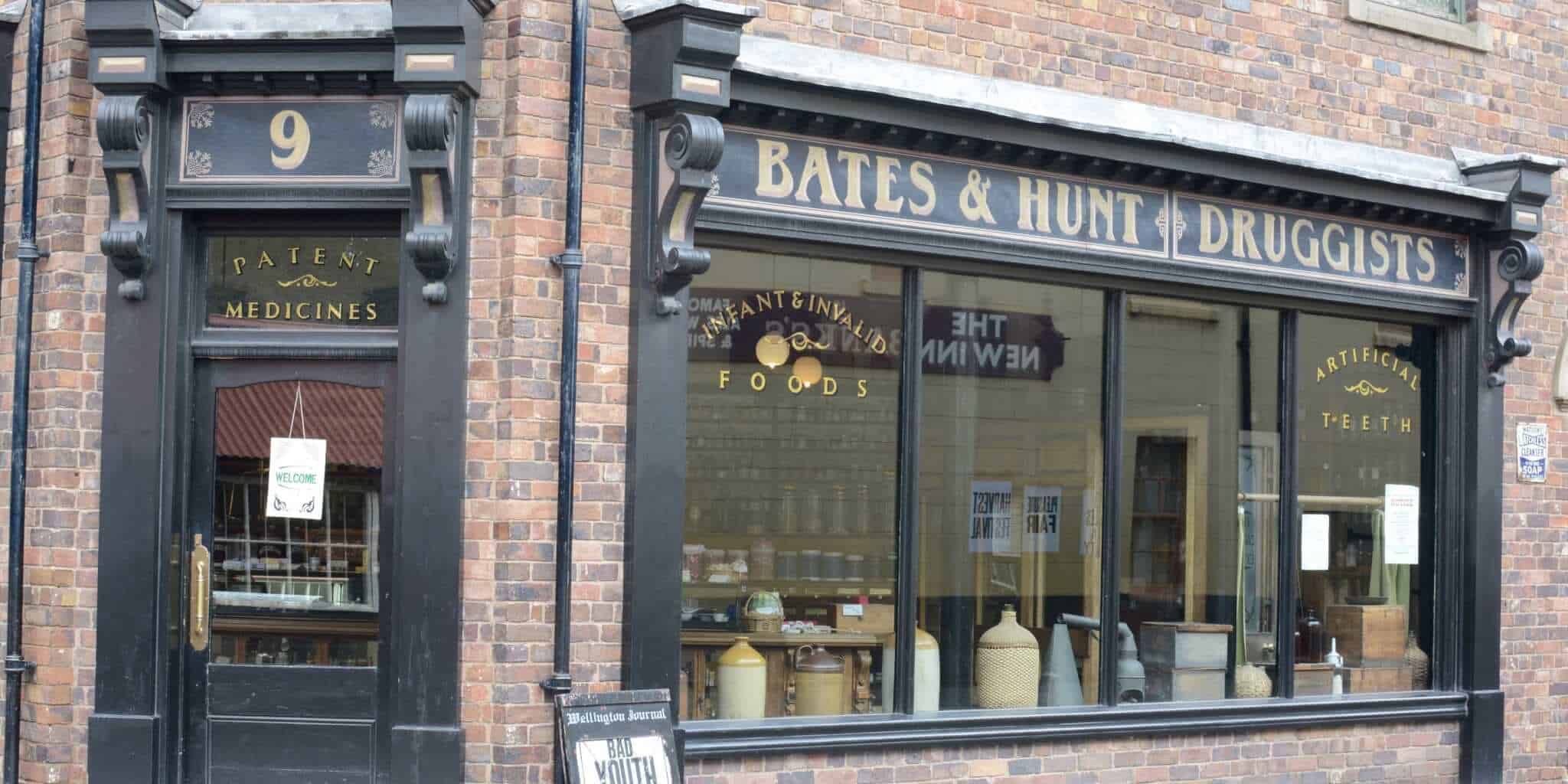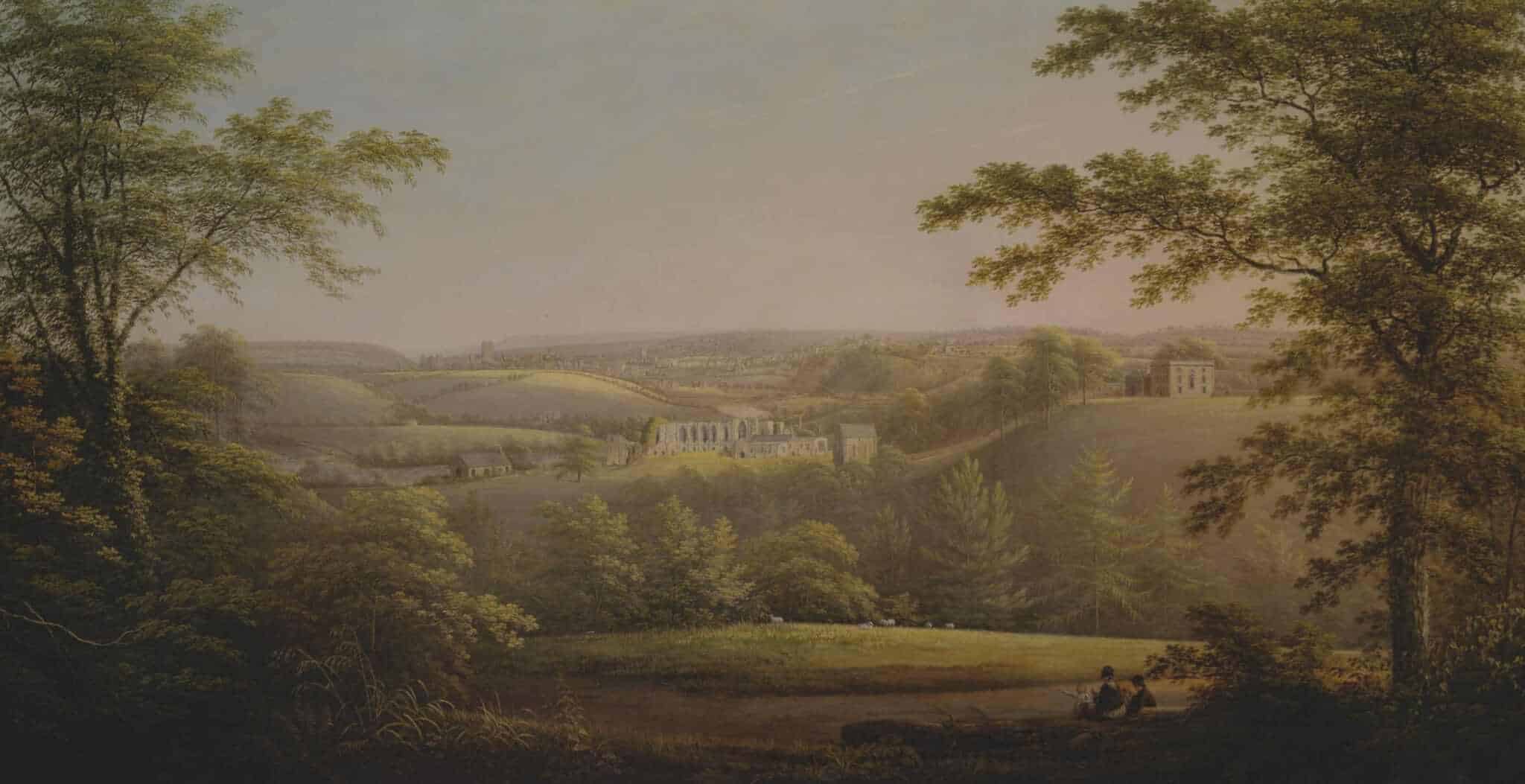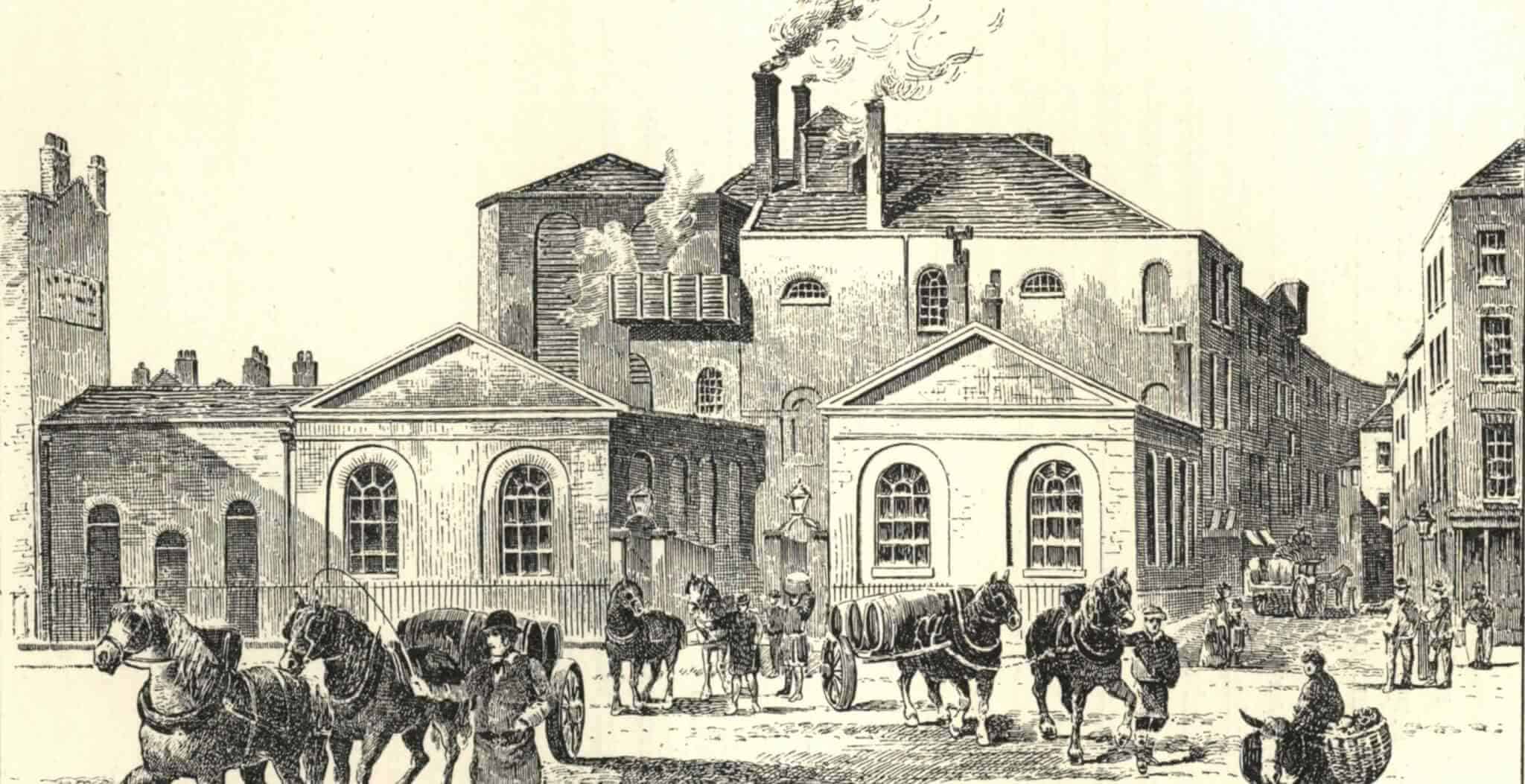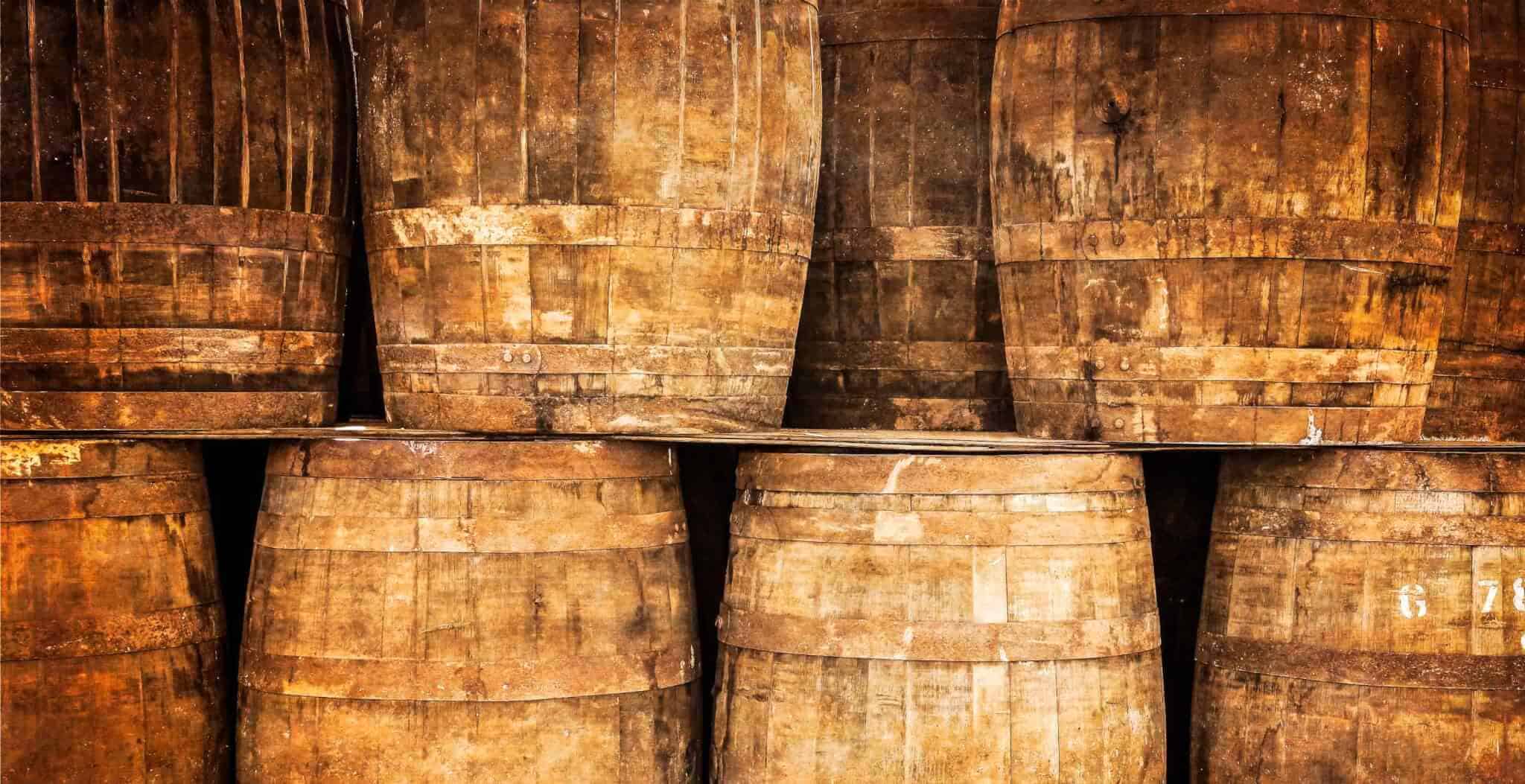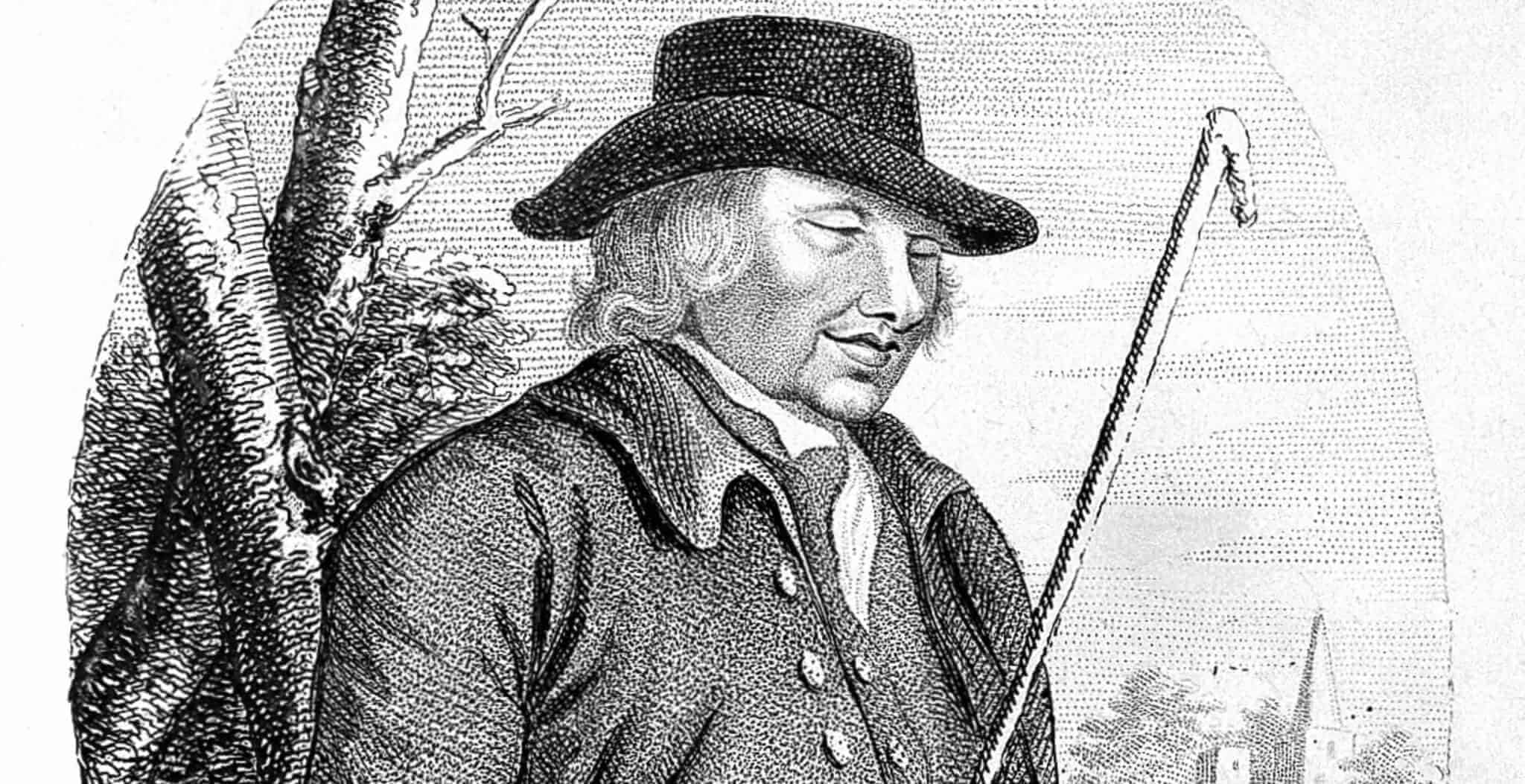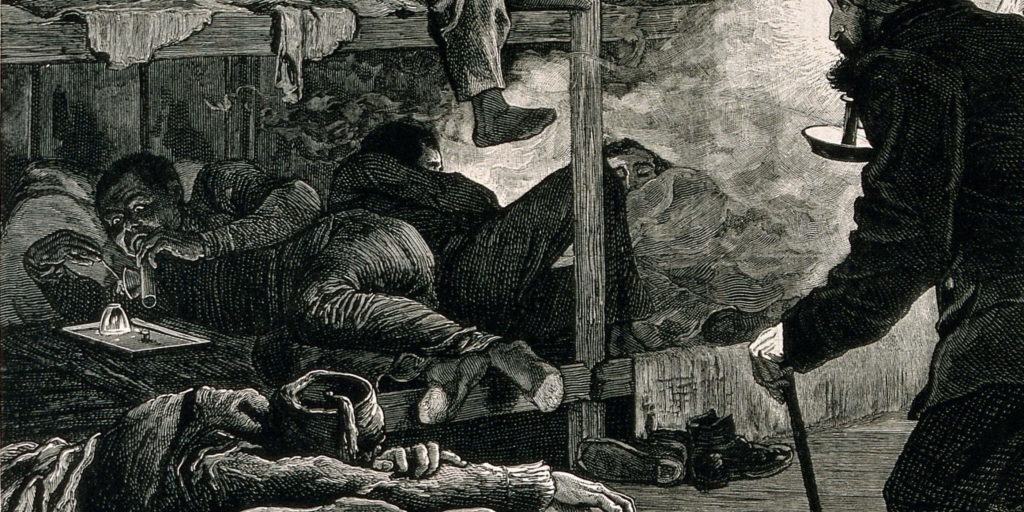The 1858 Bradford humbug poisoning involved the accidental arsenic poisoning of more than 200 people. Twenty people died and over 200 became seriously ill when sweets accidentally made with arsenic were sold from a market stall in Bradford, Yorkshire.
But how did sweets sweetened with arsenic ever come to be sold to the public?
The reason was the high price of sugar.
Sugar cane could not grow in the British climate so sugar had to be brought into the country. Whilst it is thought that Henry III’s court was using sugar as early as 1264, it was not until the 14th century that sugar was in general use in Britain. A luxury affordable only by the super rich, it was sold at two shillings a pound (or approximately £50 in today’s money). Sugar was so valuable it was kept in locked caddies.
In the 17th and 18th century sugar plantations in the West Indies supplied Britain with sugar, and trading ports such as Bristol grew rich on the trade.
By 1750, there were 120 sugar refineries operating in Britain but these could only produce 30,000 tons of sugar per year, so prices were very high. Vast profits were made in the sugar trade, to the extent that sugar was called “white gold”. The government recognised this and taxed it highly. In 1815 the tax raised from sugar in Britain was a staggering £3,000,000.
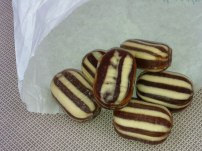 As the price of sugar was so prohibitive, it was often mixed with cheaper substances or ‘daft’ and then this inferior sugar would be sold on to the working classes. ‘Daft’ was a mixture of substances such as powdered limestone and plaster of Paris, not tasty but perfectly safe.
As the price of sugar was so prohibitive, it was often mixed with cheaper substances or ‘daft’ and then this inferior sugar would be sold on to the working classes. ‘Daft’ was a mixture of substances such as powdered limestone and plaster of Paris, not tasty but perfectly safe.
And so to Bradford in October 1858.
William Hardaker, known to locals as “Humbug Billy”, sold sweets from a stall in the Green Market in central Bradford. As was common practise at the time, his supplier and maker of the sweets – in this case peppermint humbugs – used ‘daft’ in his sweet production, supplied by a druggist in Shipley. Tragically on this occasion, due to a mistake at the pharmacy, 12 pounds of arsenic trioxide were purchased instead of the harmless ‘daft’. Both ‘daft’ and arsenic trioxide are white powders; the arsenic trioxide was not properly labelled and stored alongside the ‘daft’, and so the confusion arose.
The mistake was not discovered during the manufacture of the sweets, even though the finished product did look a little unusual. The sweets (lozenges) were made by James Appleton, who combined forty pounds of sugar, twelve pounds of arsenic trioxide, four pounds of gum, and peppermint oil, to create at least forty pounds of peppermint humbugs.
The sweets reportedly contained enough arsenic to kill two people per humbug.
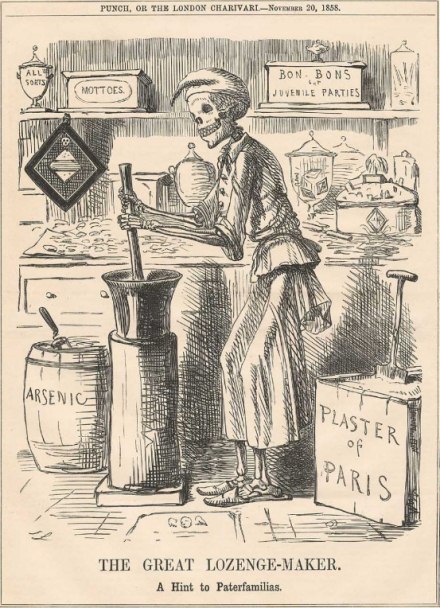
With kind permission: Mark Davis Photography
Hardaker went on to sell the sweets from his market stall that night. Of those who purchased and ate the sweets, around 20 people died, with a further 200 or so becoming severely ill with arsenic poisoning within a day or so.
All involved were subsequently charged with manslaughter but none were convicted.
The Bradford poison scandal led to new legislation in order to protect the public from any similar tragedy. The 1860 Adulteration of Food and Drink Bill changed the manner by which ingredients could be used, mixed and combined. The UK Pharmacy Act of 1868 introduced more stringent regulations regarding the handling and selling of named poisons and medicines by druggists and pharmacists.
The abolition of the sugar tax in 1874 meant sugar became affordable to all.
Published: 8th December 2014.
